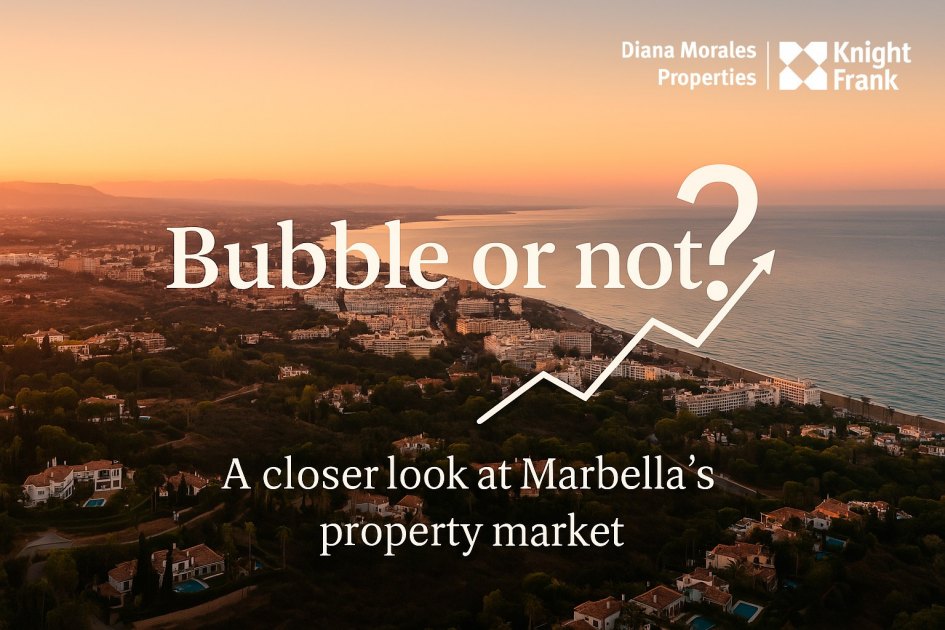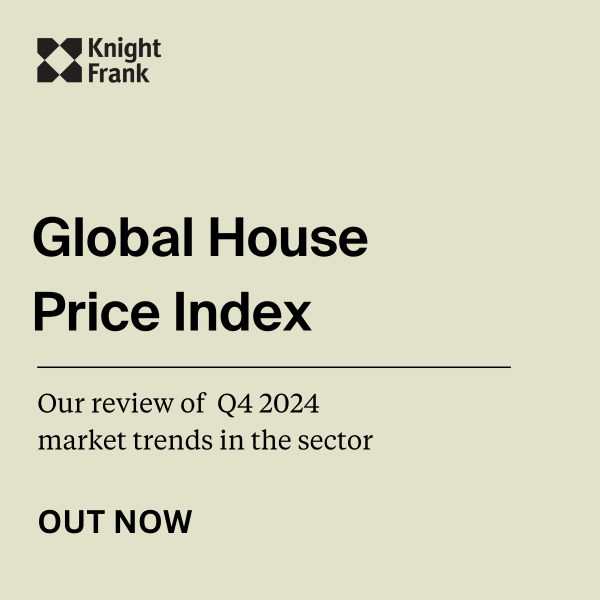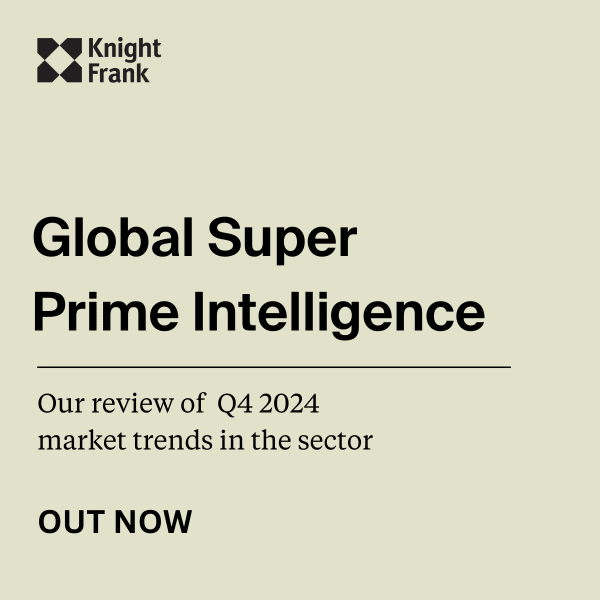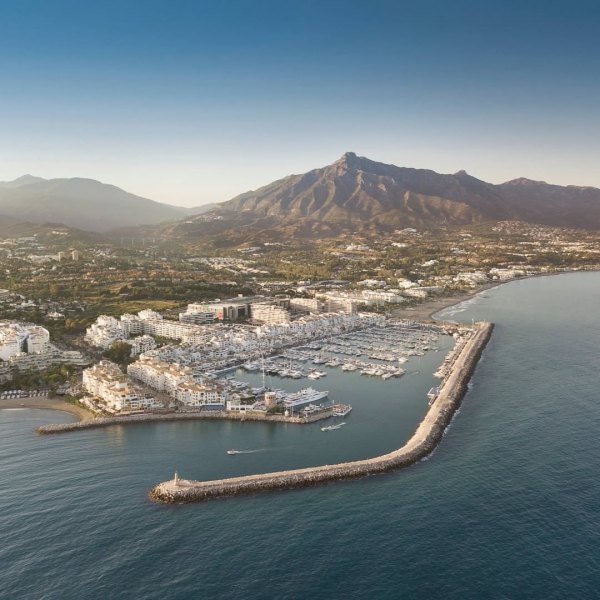Is the Marbella property market heading for a bubble?
Property markets, like most things in life, move in cycles – upwards and down, followed by the same. After four years of rather intense growth, with high demand driving rapid price increases, some people are asking if the market may not be on its way to a bubble. In other words, whether we are about to reach the end of the latest growth cycle.

“The fact is, it doesn’t seem that way. In spite of high demand that has been on-going for some time now and rising prices, there is neither a palpable sense of a property bubble on the Costa del Sol nor do any of the factual indicators point that way. Demand continues to be strong, but the rate of growth is gradually slowing down a bit from what were clearly unsustainably high levels in 2022, and the same is true of prices, which are still growing but at a slightly reduced rate. If we compare the current situation with the build-up to the Financial Crisis of 2008 it is clear that we are as yet far removed from that scenario,” says Mariano Berinstain Managing Director of DM Properties/Knight Frank in Marbella.
This is because in the years leading up to the Financial Crisis, intrinsic demand for housing on the Costa del Sol had, to a very significant proportion, been replaced by people buying purely for investment reasons. In other words, the market was rife with speculation, and this combined with a too-liberal lending environment eventually led to the heavy impact of the financial crash of 2008 on the local real estate and construction sectors, involving the banks as well. Today, the banks are more cautious and recapitalised, the Spanish economy is growing well, and with it, unemployment is at a low, wages are just outpacing inflation and there are therefore more and better jobs, stimulating consumer spending and saving – and potentially the drive to get on to the property ladder.
Our region
The above pertains mostly to the national picture and also to other largely domestic markets such as Málaga, where the cost of inner-city properties is driving more and more (especially younger) buyers to the newer outer suburbs, as well as adjacent areas such as Torremolinos and Benalmádena, which will then also see their fortunes rise. In Marbella and surroundings, however, the bulk of demand comes from foreign (largely European) buyers, many of whom are affluent cash second and first home buyers as well as investors. The intrinsic demand for Spain remains strong – in the form of record-breaking tourist numbers and spending (contributing to up to 20% or more of the Spanish economy) and home purchases, as well as foreign direct investment in all manner of projects, especially property development.
Many investors buy-to-let, but whereas there is a governmental drive to reduce the number of properties with a tourist licence that enables holiday lets – supported by many communities of owners voting to do the same – the most recent legislation that gives property owners a great deal more power to evict illegal squatters, favours the long-term let market. Most, however, still buy properties in Marbella and surroundings as a holiday home or, increasingly, also as a permanent or near-permanent residence. This on-going strong intrinsic demand for Costa del Sol real estate continues to drive a buoyant market, and though a slightly slowing rate of growth should also lead to less pressure on property values, the latter are still expected to rise somewhere between 5% and 15% this year, due in part to relative scarcity of supply and rising construction costs because of land prices and labour shortages.
The latter affects especially new-build homes, which are expected to experience a rise of 15-20% in price, with existing resale properties falling in the 5-15% range, depending upon the home and its location. Prices will also be pushed upwards by gradually decreasing interest rates, but while these conditions are likely to still dominate 2025 many do expect that the increasing supply of new homes will begin to alleviate the supply shortage versus demand by next year, which is when we could begin to see a more serious slowing down in the rate of real estate values on the Costa del Sol and Málaga.
In summary
Summarised, all the above means that we can:
- Expect 2025 to be another highly active year in Costa del Sol real estate transactions, with the rest of Spain and the domestic market also picking up after a slight downturn last year.
- Prices will continue to rise because of limited supply versus high demand – increasingly from the domestic market as well, but especially from the HNW international market in Marbella and surrounding areas.
- New construction will begin to alleviate the shortage of properties by 2026, but not before we see price increases of 5-15% in resales and 15-20% in new-builds over 2025.
- New and expected legislation makes short-term rentals more challenging but favours homeowners and investors in relation to long-term rentals.
- The rate of property transactions on the Costa del Sol may begin to slow down a little in 2025 and 2026, but remain buoyant.
“The impression on the ground that we’re not nearing a property bubble and that 2025 will continue to be a strong year for real estate in Málaga province is supported by the main indicators, so it looks like we’re not out of the growth cycle yet – thanks to continued strong demand that for now remains in balance with price increases,” concludes Mariano Beristain, Managing Director of DM Properties. “A growing supply of stock should begin to reduce pressure on property values, and 2026 should see slowing rates of price growth, which in terms of continued market equilibrium is a good thing.”
Figures
- PRICES: +13,6% increase in Málaga province in 2024 – 5-15% expected in 2025 for existing resales and 15+% expected in new-builds (source: TINSA).
- SUPPLY: 8,900+ new properties approved in Málaga province in 2024, up 27.5% from 2023 (source: Official College of Architects of Malaga).
- Spanish economic growth for 2025 expected at 2,8% - 1pp higher than originally estimated, and one of the fastest-growing economies in the EU (source: BBVA Research based on official data from INE).
- INFLATION: expected to drop to around 2% in 2025 (source: European Union Economy and Finance Dept.).
- MORTGAGES: loans now often rising from 70% to 80%, with interest rates as low as 2% (source: Forcadell).
Beatriz Martinez, 14 Apr 2025 - News
Related Articles

Knight Frank Global House Price Index, Q4 2024
2 min. read · Pia Arrieta

Welcoming New Leadership at DM Properties.
2 min. read · Pia Arrieta

A global super-prime sales surge, Q4 2024
2 min. read · Pia Arrieta

Costa del Sol Tourism Hits Record High in 2024 – What to Expect in 2025
6 min. read · Pia Arrieta